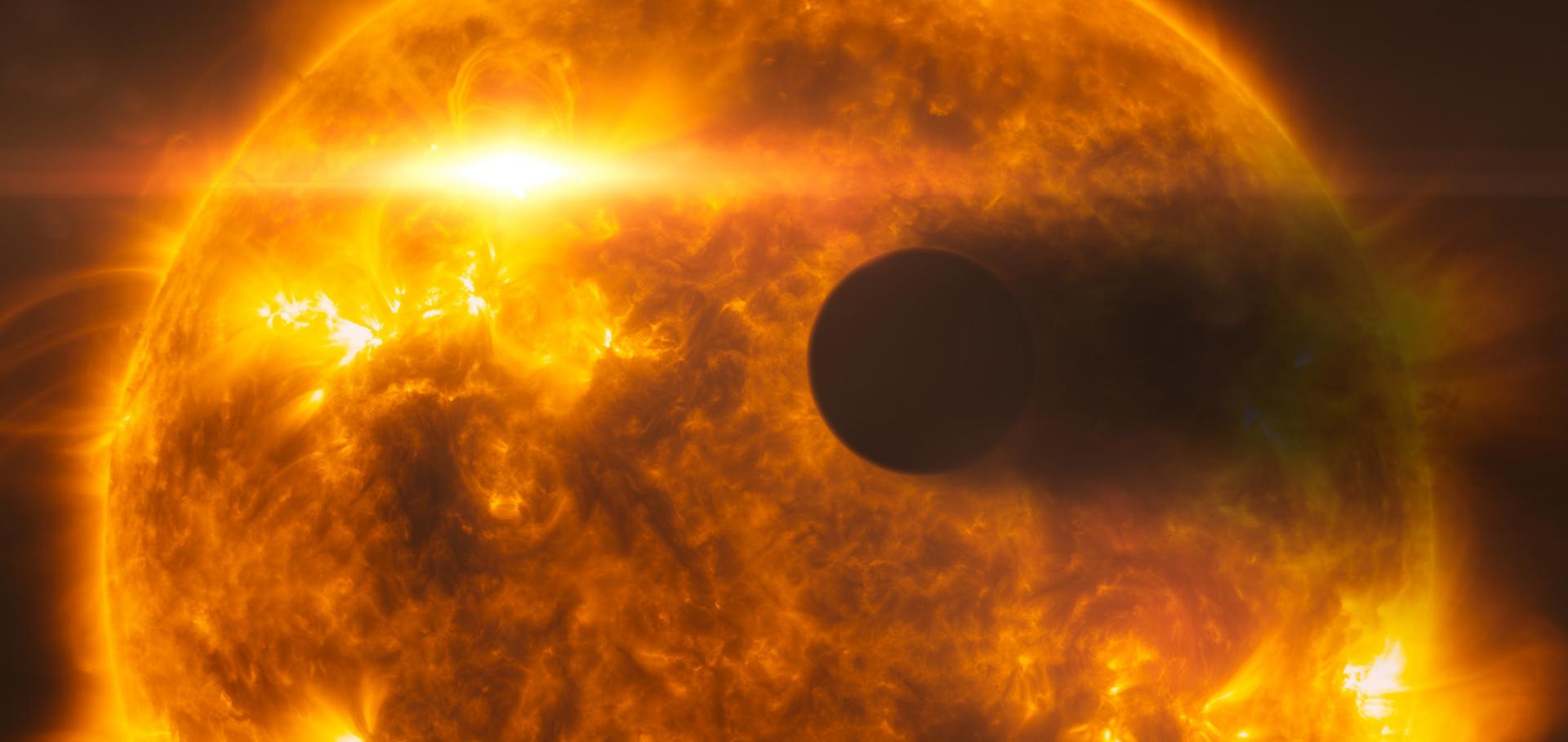The Monitor project: The search for transits in the open cluster NGC 2362
Monthly Notices of the Royal Astronomical Society 387:1 (2008) 349-363
Abstract:
We present the results of a systematic search for transiting planets in a ∼5 Myr open cluster, NGC 2362. We observed ∼1200 candidate cluster members, of which ∼475 are believed to be genuine cluster members, for a total of ∼100 h. We identify 15 light curves with reductions in flux that pass all our detection criteria, and six of the candidates have occultation depths compatible with a planetary companion. The variability in these six light curves would require very large planets to reproduce the observed transit depth. If we assume that none of our candidates are, in fact, planets then we can place upper limits on the fraction of stars with hot Jupiters (HJs) in NGC 2362. We obtain 99 per cent confidence upper limits of 0.22 and 0.70 on the fraction of stars with HJs (fp) for 1-3 and 3-10 d orbits, respectively, assuming all HJs have a planetary radius of 1.5RJup. These upper limits represent observational constraints on the number of stars with HJs at an age ≲10 Myr, when the vast majority of stars are thought to have lost their protoplanetary discs. Finally, we extend our results to the entire Monitor project, a survey searching young, open clusters for planetary transits, and find that the survey as currently designed should be capable of placing upper limits on fp near the observed values of fp in the solar neighbourhood. © 2008 RAS.The Monitor project: Rotation of low-mass stars in the open cluster NGC 2547
Monthly Notices of the Royal Astronomical Society 383:4 (2008) 1588-1602
Abstract:
We report on the results of an I-band time-series photometric survey of NGC 2547 using the MPG/ESO 2.2-m telescope with Wide Field Imager, achieving better than 1 per cent photometric precision per data point over 14 ≲ I ≲ 18. Candidate cluster members were selected from a V versus V - I colour-magnitude diagram over 12.5 < V < 24 (covering masses from 0.9 M⊙ down to below the brown dwarf limit), finding 800 candidates, of which we expect ∼330 to be real cluster members, taking into account contamination from the field (which is most severe at the extremes of our mass range). Searching for periodic variations in these gave 176 detections over the mass range 0.1 ≲ M/M⊙ ≲ 0.9. The rotation period distributions were found to show a clear mass-dependent morphology, qualitatively intermediate between the distributions obtained from similar surveys in NGC 2362 and 2516, as would be expected from the age of this cluster. Models of the rotational evolution were investigated, finding that the evolution from NGC 2362 to 2547 was qualitatively reproduced (given the uncertainty in the age of NGC 2547) by solid body and core-envelope decoupled models from our earlier NGC 2516 study without need for significant modification. Journal compilation © 2007 RAS.Transiting exoplanets from the CoRoT space mission: IV. CoRoT-Exo-4b: A transiting planet in a 9.2 day synchronous orbit
Astronomy and Astrophysics 488:2 (2008)
Abstract:
CoRoT, the first space-based transit search, provides ultra-high-precision light curves with continuous time-sampling over periods of up to 5 months. This allows the detection of transiting planets with relatively long periods, and the simultaneous study of the host star's photometric variability. In this Letter, we report the discovery of the transiting giant planet CoRoT-Exo-4b and use the CoRoT light curve to perform a detailed analysis of the transit and determine the stellar rotation period. The CoRoT light curve was pre-processed to remove outliers and correct for orbital residuals and artefacts due to hot pixels on the detector. After removing stellar variability about each transit, the transit light curve was analysed to determine the transit parameters. A discrete autocorrelation function method was used to derive the rotation period of the star from the out-of-transit light curve. We determine the periods of the planetary orbit and star's rotation of 9.20205 0.00037 and 8.87 1.12 days respectively, which is consistent with this being a synchronised system. We also derive the inclination, in degrees, the ratio of the orbital distance to the stellar radius, , and the planet-to-star radius ratio . We discuss briefly the coincidence between the orbital period of the planet and the stellar rotation period and its possible implications for the system's migration and star-planet interaction history. © 2008 ESO.The CoRoT exoplanet programme: exploring the gas-giant/terrestrial planet transition
14TH CAMBRIDGE WORKSHOP ON COOL STARS, STELLAR SYSTEMS, AND THE SUN 384 (2008) 270-+
Transiting exoplanets from the CoRoT space mission
ASTRONOMY & ASTROPHYSICS 482:3 (2008) L21-U11


